History Through the Windshield
Montana's Highway Markers
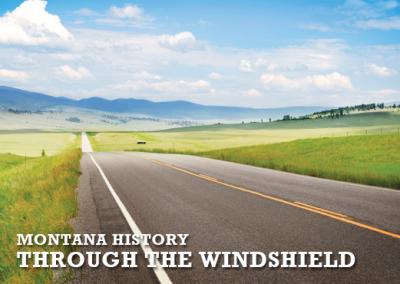
History Through the Windshield
Montana's Highway Markers
During the Great Depression, famed correspondent Ernie Pyle toured the United States and wrote about his travels in a weekly column for the Scripps-Howard newspaper chain. He visited Montana in 1936 and became a big fan of the state’s transportation landscape, writing, “Every so often along the highways … you’ll see a neat little sign: ‘Historical Point – 1000 feet.’ You coast along and pull over to a wide graveled area, and there is a handsome signboard consisting of two logs set upright in the ground, with a third laid across the top, from which hangs a neat wooden placard about six feet square. On this board the historical message is painted in black letters a couple of inches high. The message is not only easy to read; it says something….”
Like thousands of other Americans, Pyle was a devotee of the signs written by Montana Highway Department engineer Robert H. Fletcher. The roadside historical markers were just one facet of Fletcher’s campaign designed to draw tourists to Montana, but they ended up being the most recognized and praised by the public.
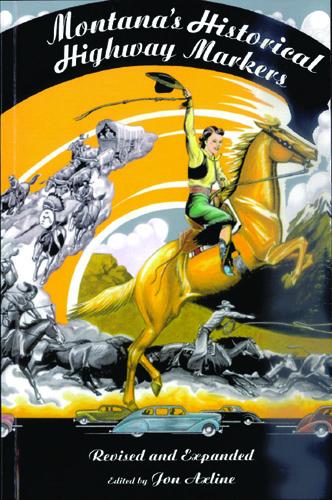
Rosebud
I 94, MP 112, Hathaway rest area
From July 28, 1806, when Wm. Clark passed Rosebud Creek on his way down the Yellowstone, this river valley has served as one of the major avenues for development and trade in eastern Montana. Innumerable trappers and traders followed Clark’s route, including the American Fur Co. which constructed Ft. Van Buren at the juncture of the Rosebud and Yellowstone in 1835. The fort proved unprofitable and was abandoned in 1843.
Buffalo hunters took over 40,000 robes from this area alone during the 1860s and 1870s, shipping them out by river boat. The slaughter disrupted eastern Montana’s Indian culture and precipitated several years of bloody confrontation culminating in the Battle of the Rosebud on June 17, 1876, and the Battle of the Little Big Horn eight days later.
In late 1882, the Northern Pacific R.R. established a siding in the Rosebud vicinity as it pushed westward. Soon a town sprang up as a livestock shipping center with Butte Creek and the Rosebud forming a natural corral. Rail and auto transportation quickly replaced wagon and river traffic. As Rosebud grew it even acquired its own car dealership, the Otis Davis Agency featuring the E.M.F. line. Many an old timer assumed the initials meant “Every Morning Fix ‘em.”
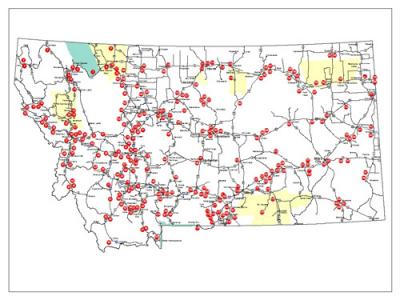
Big Sky Country
U.S. 212, MP 79, Broadus rest area
Don’t fence me in,
Gimme land, lotso’ land
Stretching miles across the West.
Don’t fence me in,
Let me ride where it’s wide
And that’s how I like it best.
I want to see the stars,
I want to feel the breeze,
I want to smell the sage
And hear those cottonwood trees.
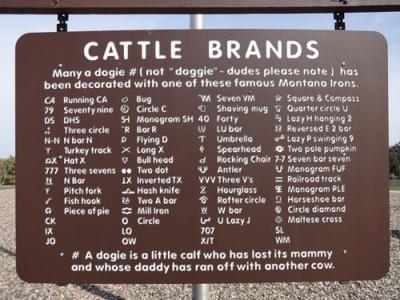
Just turn me loose,
Let me straddle my old saddle
Where the Rocky Mountains rise.
On my cayuse,
I’ll go siftin’, I’ll go driftin’
Underneath those Western skies.
I gotta get where the West commences,
I can’t stand hobbles;
I can’t stand fences.
Don’t fence me in.
Montana’s big sky has inspired many poets. The verses above were penned by Bob Fletcher, father of the state’s historical highway markers, which were first erected in the 1930s. In 1934, Cole Porter bought this poem from Fletcher, and it became one of Porter’s greatest hits. It was not until 1954 that Fletcher got credit for composing the famous lyrics that inspired the hit song, “Don’t Fence Me In.”









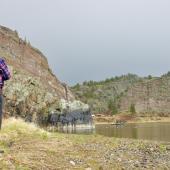
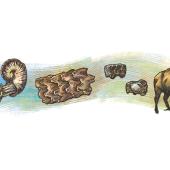

Leave a Comment Here